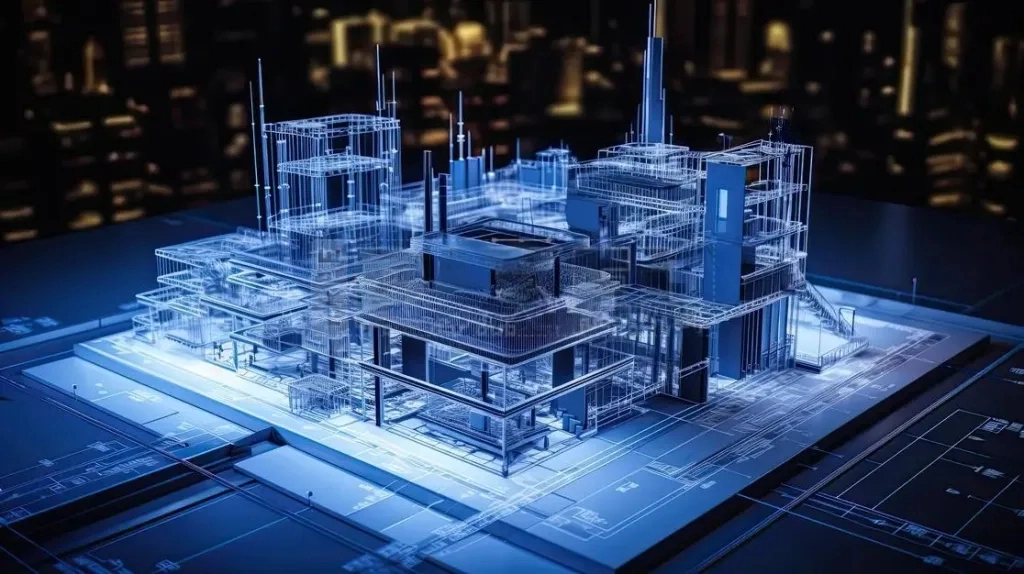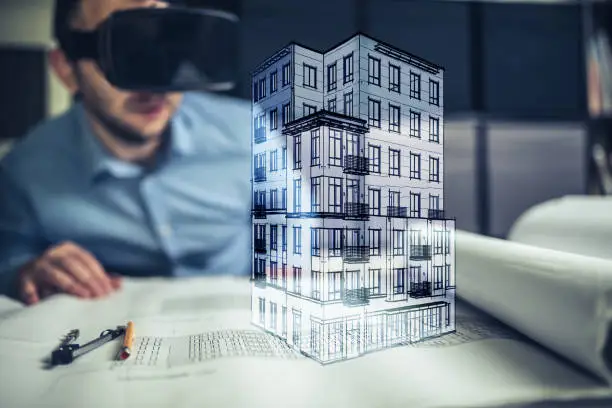What is Augmented Reality?
Augmented Reality (AR) is a technology that overlays digital information, such as virtual objects, graphics, or data, onto the real world, thereby enhancing the user’s perception and interaction with the physical environment. AR blends virtual elements with the real world in real-time, creating an immersive and interactive experience. Unlike Virtual Reality (VR), which completely replaces the real world with a simulated environment, AR enhances the real world by adding digital elements that appear as if they exist in the physical space. Augmented reality in construction can be experienced through various devices.


What is Virtual Reality?
Virtual Reality (VR) is a technology that creates a simulated, artificial environment or world that users can interact with and immerse themselves in. Unlike Augmented Reality (AR), which overlays digital elements onto the real world, VR aims to completely replace the user’s physical surroundings with a virtual environment. The virtual environment in VR can be computer-generated and can simulate a wide range of experiences and settings, from realistic environments to fantastical or fictional worlds. Users can often interact with the virtual environment using handheld controllers or other input devices, enabling actions like grabbing objects, moving around, or manipulating the virtual space.
AR-Application in Construction Industry
Design Visualization: AR allows architects, engineers, and clients to visualize 3D models of buildings or infrastructure projects overlaid onto the physical environment. This helps stakeholders understand the spatial relationships and make design decisions more effectively.
On-Site Assistance: AR can provide on-site workers with real-time visual overlays of digital information, such as blueprints, instructions, or safety guidelines. This helps workers understand complex tasks, follow precise measurements, and enhance overall accuracy.
Virtual Mock-ups: AR can create virtual mock-ups of construction projects, allowing stakeholders to explore and interact with the virtual model. This helps in identifying design flaws, validating design choices, and facilitating collaborative decision-making.
Equipment and Material Placement: AR can assist in precise placement of equipment, machinery, and building materials on-site. By overlaying virtual models onto the physical space, construction professionals can ensure accurate positioning, reducing errors and rework.


Clash Detection: AR can help identify clashes or conflicts between different building systems or components. By overlaying the digital model onto the physical environment, potential clashes can be detected early in the design phase, saving time and costs associated with rework.
Safety Training: AR can be used for safety training by simulating hazardous scenarios or demonstrating safety protocols. Workers can experience and learn how to respond to potentially dangerous situations in a controlled and safe virtual environment.
Progress Monitoring: AR can facilitate real-time progress monitoring by overlaying digital markers onto the physical construction site. Project managers can track the status of different tasks, compare them against the project schedule, and identify any deviations or delays.

